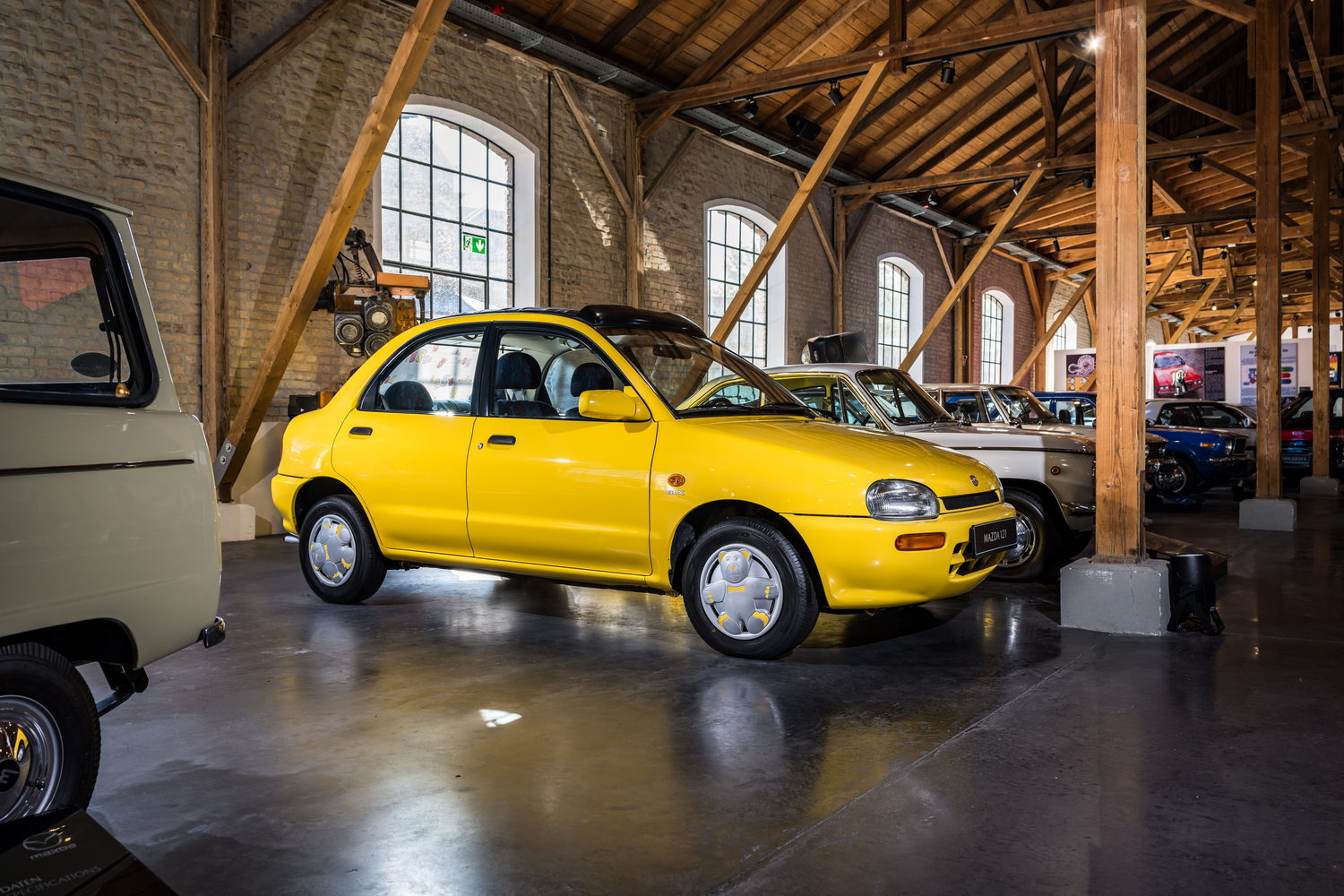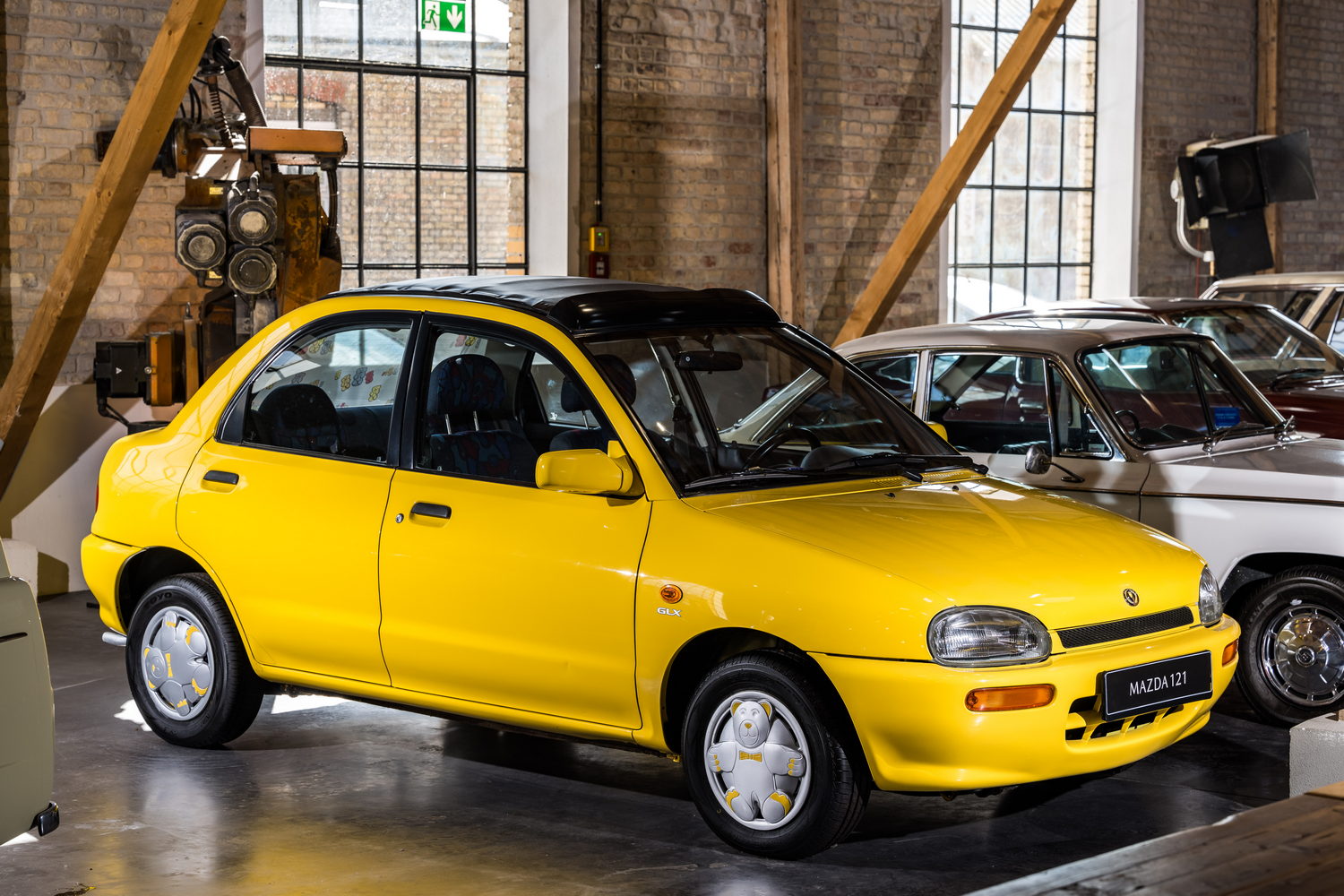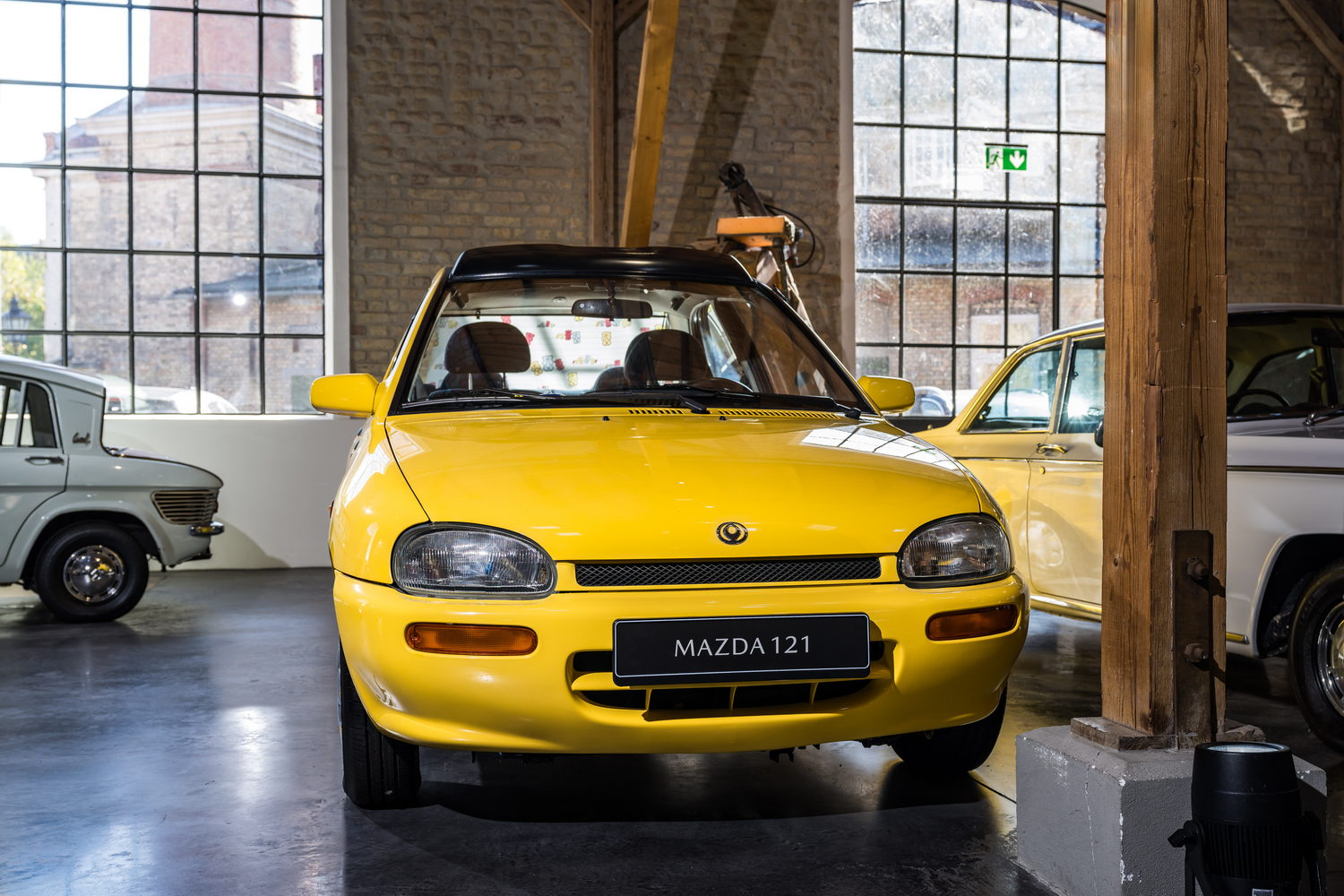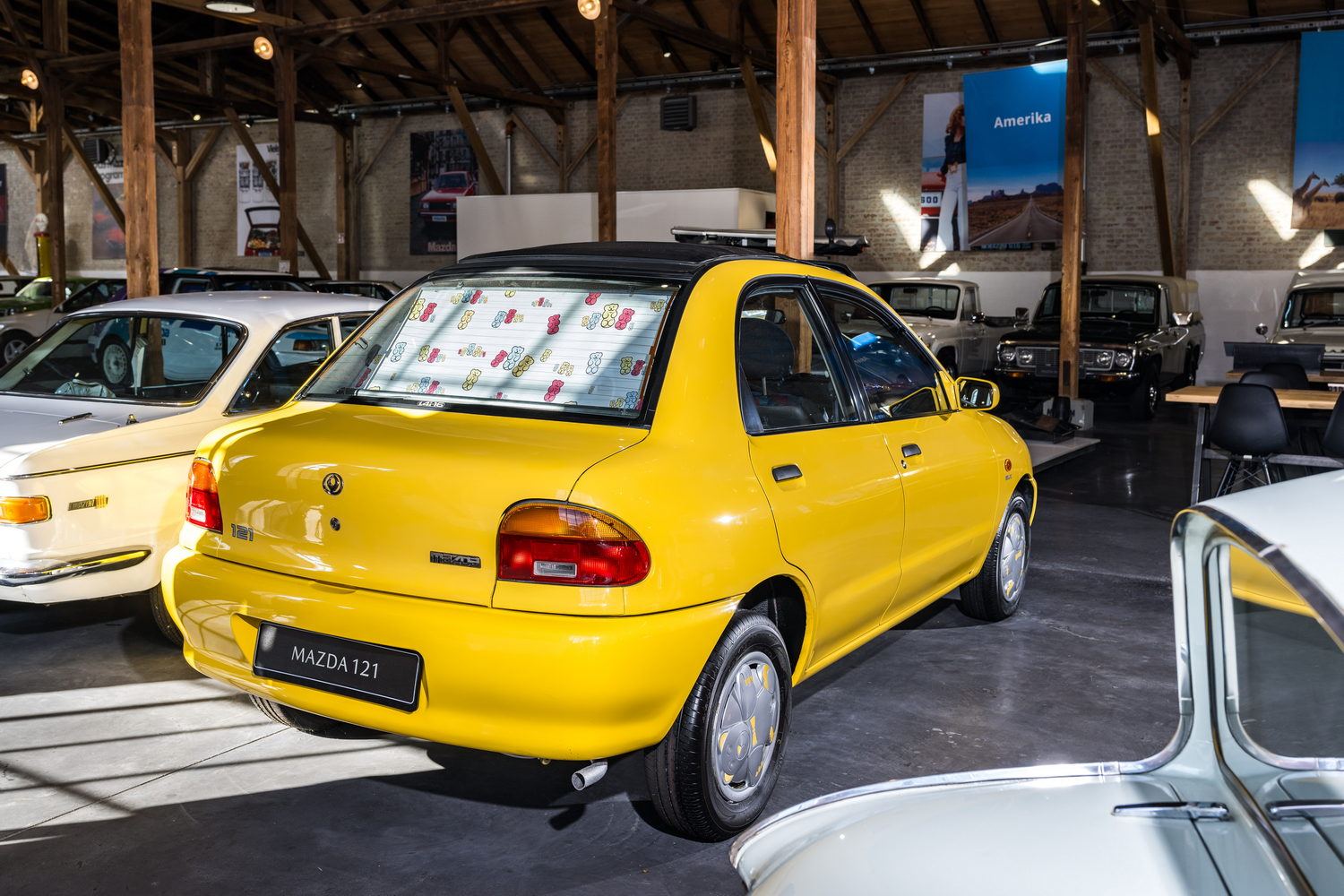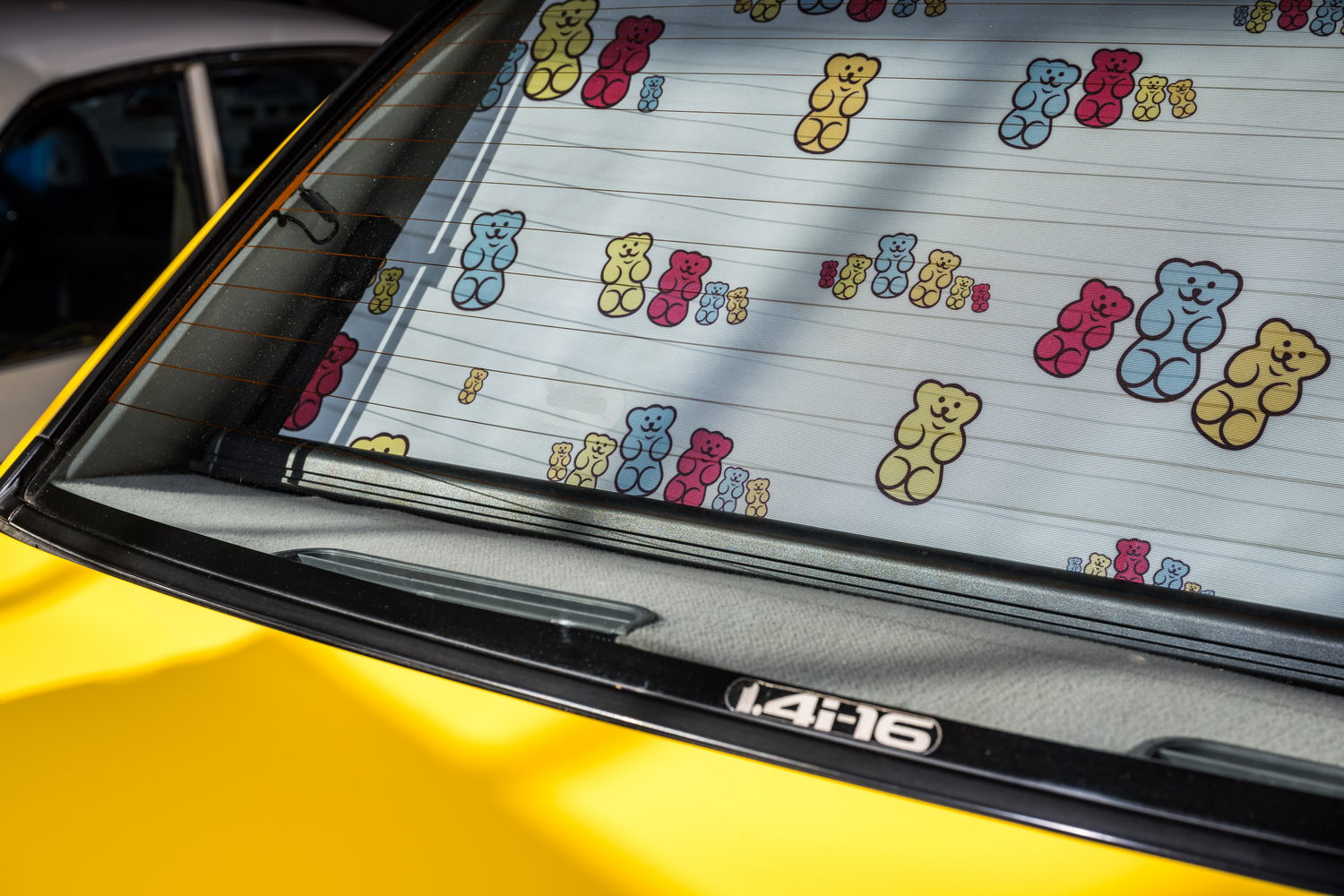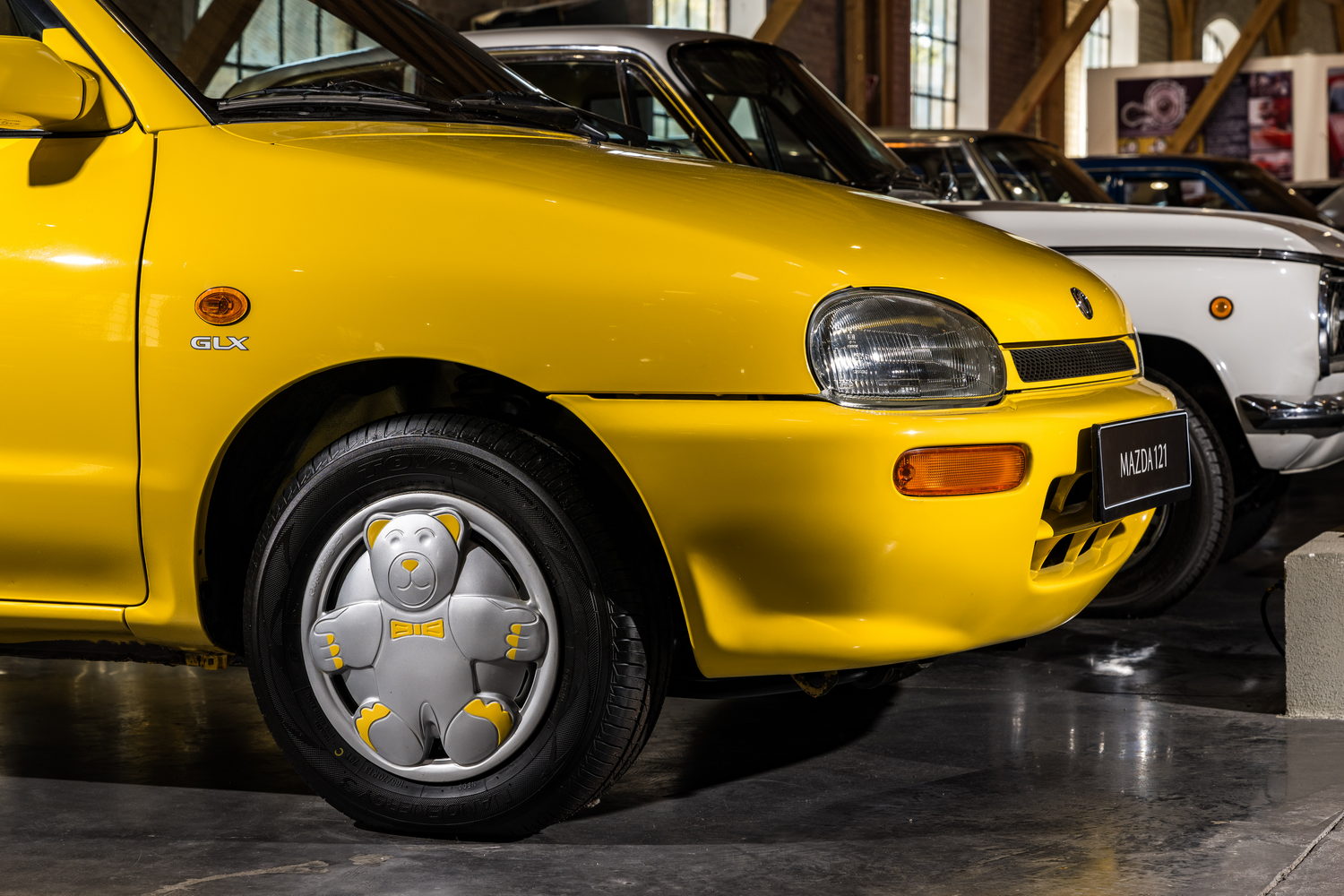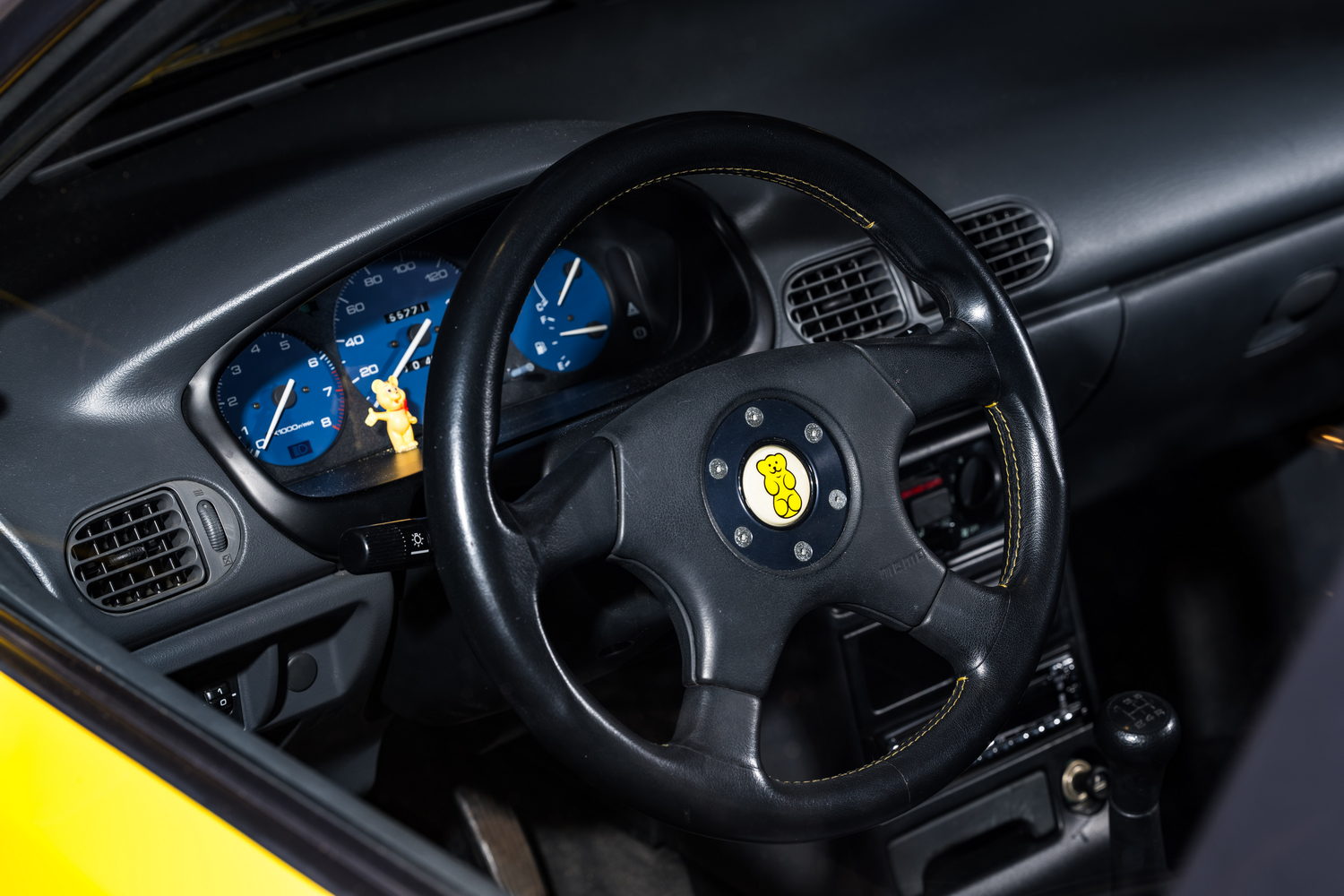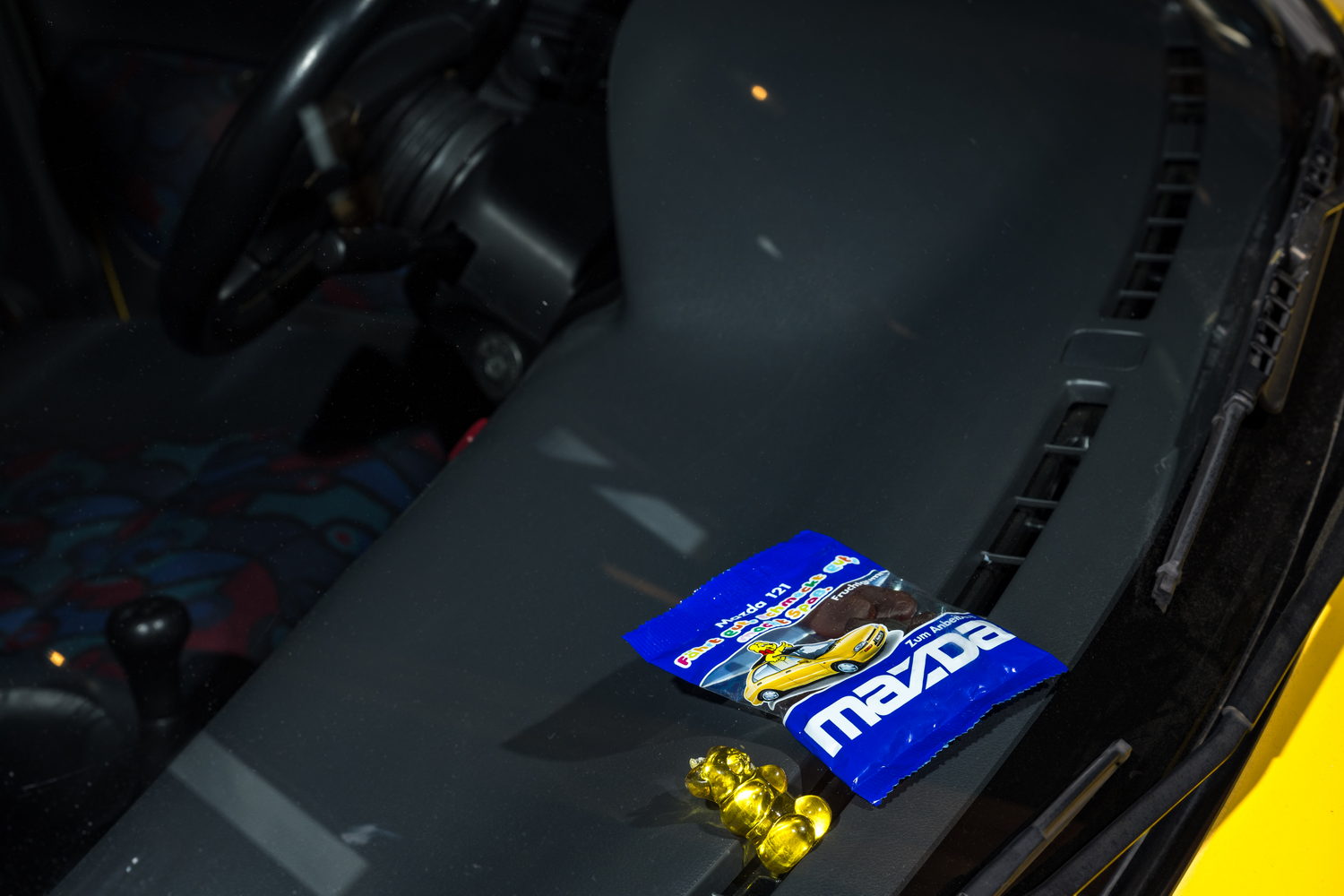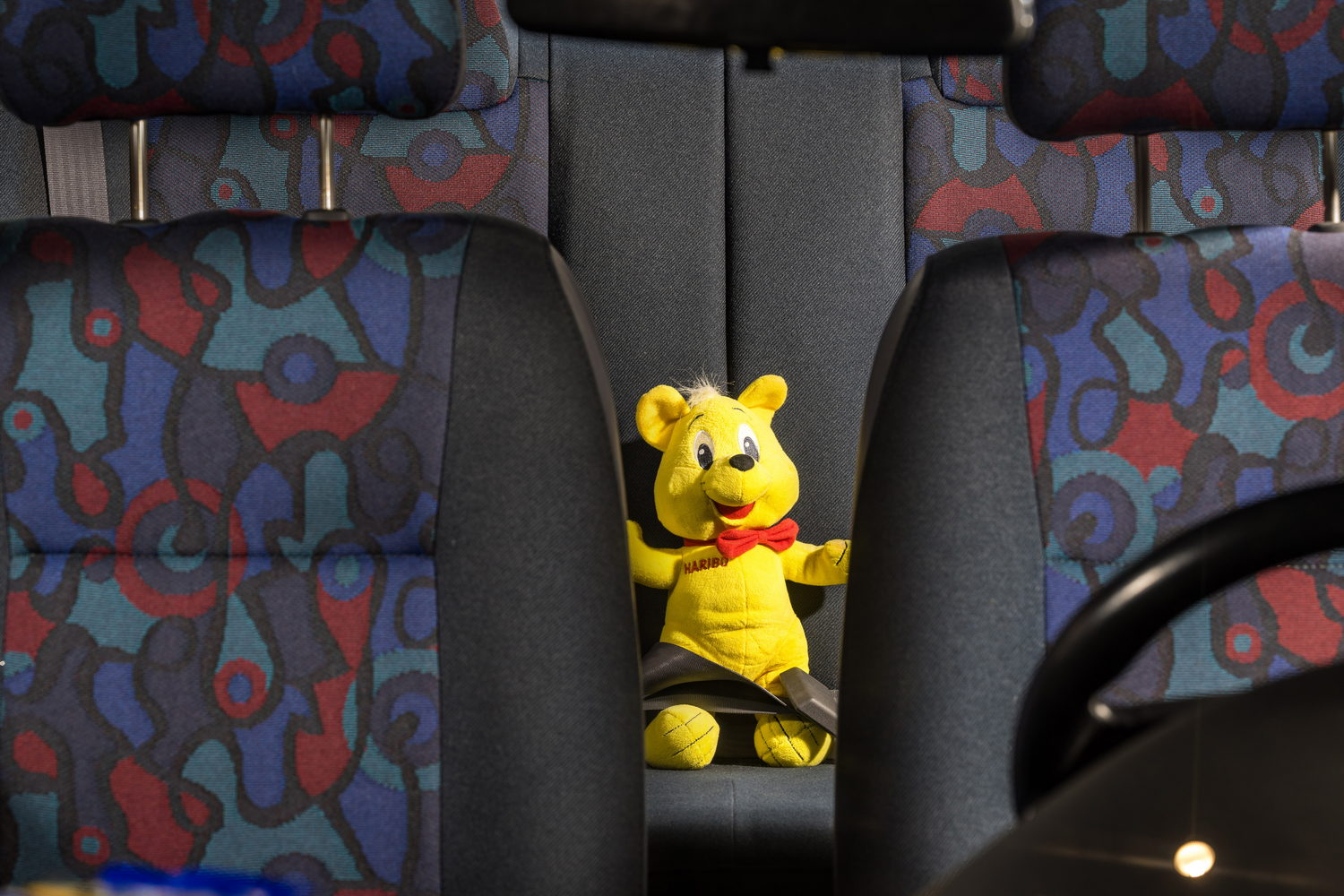It's not as if the Mazda 121 wasn't sweet enough already. The 121 badge had been used by Mazda since 1975, but in 1991 the Japanese company decided that what it needed was something far more distinctive than the bland, boxy 'DA' model that it had been building. That was a car which, in badge-engineered form, was also called a Ford Festiva in some American markets, but what Mazda planned for its replacement was never going to be copied.
Rather like the contemporary 'K11' version of the Nissan Micra, Mazda decided to go cute-and-cuddly with the 121's styling, and so the 'DB' model, which would be built from 1991 to 1998 (and would also be called the Autozam Revue in some Asian markets) looked as if you'd let the Peppa Pig animation team design a compact four-door saloon.
Its proportions were genuinely cartoonish, with short, curved bonnet and boot and a lofty, glassy, round-roofed cabin between. It looked utterly disarming, and just a touch silly - but in a good way. It was variously nicknamed 'the bubble car', 'the jellybean', or in Australia, 'the hat' and in Belgium and the Netherlands, it is often referred as 'De Bolhoed', or Bowler Hat.
It wasn't the most powerful car around - the basic 1.1-litre petrol engine made just 54hp, and even the double-overhead-cam 1.5 could muster only 88hp - but it was zippy and reliable, and came with the option of an automatic gearbox at a time when many rival small cars didn't. You could even get it with a full-length canvas sunroof if you wanted.
The Haribo effect
Could the 121 become even more cute, though? You bet it could, and Mazda decided that a car which looked so sweet could only be paired up with something even sweeter - Haribo jellies, in fact.
So the 121 Goldy was born. Made only for the German, Swiss and Austrian markets the 121 Goldy came with bright yellow paint, inspired by Haribo Golden Bears sweets. It was also tweaked a little by Hofele Design, a company better-known for adding expensive extras to high-priced German saloons.
Hofele added a Momo steering wheel featuring a Gold Haribo Bear on the hub, a rear window shade with a colourful gummy bear design and a set of Haribo bear wheel covers. Oh, and every 121 Goldy sold came complete with 100 bags of Haribo jellies and a stuffed cuddly Haribo bear toy. Just 1,000 Goldy special editions were built.
The 121 Goldys were also equipped as standard with the full-length canvas sunroof, which Mazda referred to as "a soft-top model, which allowed drivers to bask in the sun on warm days." The Goldy's canvas section even features gummy-bear logos.
All of the Goldy edition cars came with the 72hp 1.3-litre four-cylinder engine, which could get it to 100km/h in 11.4 seconds, and on to a potential top speed of 155km/h. To help promote the 121 lineup in general, the Goldy was offered as a prize in a lottery organised by Haribo as part of a contest, held under the theme 'Win gold with Haribo: Mazda 121. The Haribo Gold Bear goes for the Mazda 121.'
Today, Mazda keeps one of the Goldy cars at the Mazda Classic Automobile Museum Frey in Augsburg, Germany. In 2022, a German couple from North Rhine-Westphalia donated the car, which they had won through the special lottery hosted by Haribo.
The Haribo connection alas never helped the 121 to sweet sales success - it remained a slow seller, at least in Europe, but now that it has a happy home in Mazda's European museum, perhaps it's a sugar-coated reminder of a time when not all cars had to be big, aggressive and heavy.
More sweet Mazdas
It was also not Mazda's last encounter with the confectioners' art. Earlier this year, for Valentine's Day, Mazda made a one-off MX-5 RF out of chocolate. Exceptionally detailed, the chocolate MX-5 even featured precise body panels and alloy wheels all made from the sweet stuff. It wasn't life-sized, sadly - this was one sweet Mazda which would have fitted in your pocket.
Even so, Mazda went to extreme lengths, working with Kenta Hasegawa, a pastry chef of considerable talent who's also the head chef at Sucretier, a Tokyo-based bakery known for all kinds of sweet delights. Hasegawa created a fully-detailed interior complete with dashboard and seats, as well as the car's engine, gearbox and even the exhaust system, all out of chocolate. Even the Mazda logo on the front was present and correct, made from white chocolate so that it would stand out. Unfortunately, it was never offered for sale.
Does anyone fancy some Haribo?

